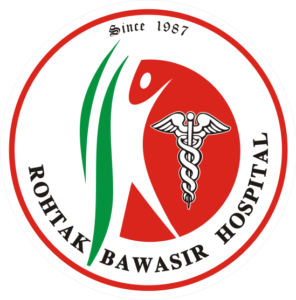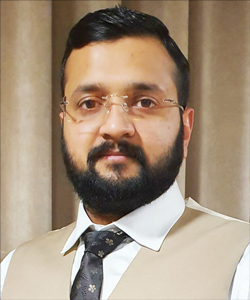The Initial Consultation: Building Trust and Understanding


Updated on: 4th Jun 2024
In any professional service, whether it’s in law, medicine, consulting, or coaching, the initial consultation is a critical step. This first meeting between client and professional is not just about assessing needs or outlining services; it’s a foundational moment where trust is established and mutual understanding is cultivated. This blog delves into why the initial consultation is so crucial and offers strategies for making it as effective as possible.
1. The Significance of the Initial Consultation
The initial consultation serves several important functions:
- Establishing Trust: This is arguably the most critical aspect of the first meeting. Trust is the bedrock of any professional relationship, and it must be built from the very beginning.
- Understanding Client Needs: This meeting allows professionals to gather detailed information about the client’s needs, goals, and challenges.
- Setting Expectations: Clear communication about what the client can expect from the professional and vice versa helps to prevent misunderstandings and misalignments later on.
- Building Rapport: Personal connections and understanding each other’s perspectives can enhance the overall effectiveness of the professional relationship.
2. Preparing for the Initial Consultation
Preparation is key to a successful initial consultation. Both parties have roles to play:
For the Professional:
- Research the Client: If possible, gather preliminary information about the client before the meeting. This could be through a questionnaire or initial screening documents.
- Review Relevant Materials: Familiarize yourself with any documents or background information provided by the client.
- Prepare Questions: Develop a list of questions that will help uncover the client’s needs and expectations. These questions should be open-ended to encourage a detailed response.
For the Client:
- Prepare Questions and Concerns: Reflect on what you want to achieve from the consultation and prepare questions or concerns you may have.
- Gather Relevant Documents: Bring any necessary documents or information that will help the professional understand your situation better.
3. Creating a Welcoming Environment
A welcoming environment is essential for building trust and making the client feel comfortable. This involves:
- Physical Setting: Ensure that the meeting space is clean, professional, and comfortable. A cluttered or unprofessional setting can create a negative first impression.
- Attitude and Approach: Greet the client warmly and with genuine interest. A friendly and approachable demeanor can help put the client at ease.
- Active Listening: Show that you are fully engaged by listening actively. This means making eye contact, nodding, and responding appropriately to the client’s input.
4. Effective Communication
Effective communication is crucial in the initial consultation. This includes:
- Clarity: Avoid jargon and ensure that your explanations are clear and understandable. This is especially important when discussing complex topics.
- Empathy: Show empathy towards the client’s situation. Acknowledge their concerns and feelings, and validate their experiences.
- Transparency: Be open about your services, fees, and processes. Transparency helps in building trust and setting clear expectations.
5. Understanding Client Needs and Goals
The core of the initial consultation is to understand the client’s needs and goals. To achieve this:
- Ask Open-Ended Questions: Questions like “What are your main concerns?” or “What do you hope to achieve?” encourage detailed responses and provide valuable insights.
- Clarify and Summarize: Paraphrase what the client has said to ensure you have understood correctly. This also gives the client a chance to correct any misunderstandings.
- Identify Priorities: Determine what the client considers most important. This will help in tailoring your approach to meet their needs effectively.
6. Setting Expectations
Setting clear expectations is vital for a successful professional relationship. This involves:
- Discussing Process and Timelines: Outline how you plan to address the client’s needs, including timelines and milestones. This helps in setting realistic expectations.
- Clarifying Roles and Responsibilities: Define what you will be responsible for and what you expect from the client. This avoids confusion and ensures a smooth working relationship.
- Reviewing Fees and Charges: Be upfront about your fees and any potential additional costs. Clear communication about financial matters helps in avoiding disputes later on.
7. Building Rapport
Building rapport is about creating a connection with the client. This can be achieved through:
- Personal Connection: Find common ground or shared interests that can help in building a personal connection. This doesn’t mean getting too personal but showing genuine interest in the client as a person.
- Positive Body Language: Non-verbal cues, such as smiling, maintaining good posture, and using open gestures, can help in making the client feel more comfortable and valued.
- Follow-Up: After the consultation, follow up with a summary of the meeting or any next steps. This shows that you are attentive and committed to the client’s needs.
8. Addressing Concerns and Questions
During the consultation, clients may have concerns or questions. Address these promptly and effectively by:
- Being Patient: Allow clients to express their concerns fully before responding. This shows that you value their input and are willing to address their issues thoroughly.
- Providing Detailed Answers: Offer clear and comprehensive answers to their questions. If you don’t have an immediate answer, be honest about it and provide a timeline for when you will follow up.
- Offering Reassurance: Address any worries the client may have with reassurance and a clear plan of action. This helps in building confidence in your services.
9. Concluding the Consultation
At the end of the consultation:
- Recap Key Points: Summarize the main points discussed, including any agreed-upon next steps. This ensures that both parties are on the same page.
- Discuss Next Steps: Outline what will happen next, including any follow-up meetings or actions required. This helps in maintaining momentum and keeping the process on track.
- Express Gratitude: Thank the client for their time and for considering your services. A polite and appreciative closing leaves a positive impression.
10. Reflecting on the Consultation
After the consultation, take some time to reflect on the meeting. Consider:
- What Went Well: Identify aspects of the consultation that were particularly successful. This helps in reinforcing effective practices.
- Areas for Improvement: Reflect on any areas where the consultation could have been improved. This helps in continuously enhancing your approach for future consultations.
- Client Feedback: If possible, seek feedback from the client on their experience. This can provide valuable insights for improving your consultation process.
Conclusion
The initial consultation is a pivotal moment in any professional relationship. It’s where trust is established, needs are assessed, and expectations are set. By preparing thoroughly, communicating effectively, and building a genuine connection, professionals can lay the groundwork for a successful and productive relationship with their clients. This first meeting is not just about assessing needs; it’s about creating a partnership built on trust and mutual understanding, paving the way for future success.
In sum, the initial consultation is more than a formal meeting; it’s an opportunity to build a strong foundation that will support a productive and fulfilling professional relationship. By focusing on building trust, understanding client needs, and setting clear expectations, professionals can ensure that their initial consultation is both effective and meaningful.
Meet Our Specialists

Dr. Raj Kumar Garg (B.A.M.S.)
40+ Years of Experience

Dr. Rahul Garg (B.A.M.S.)
15+ Years of Experience

